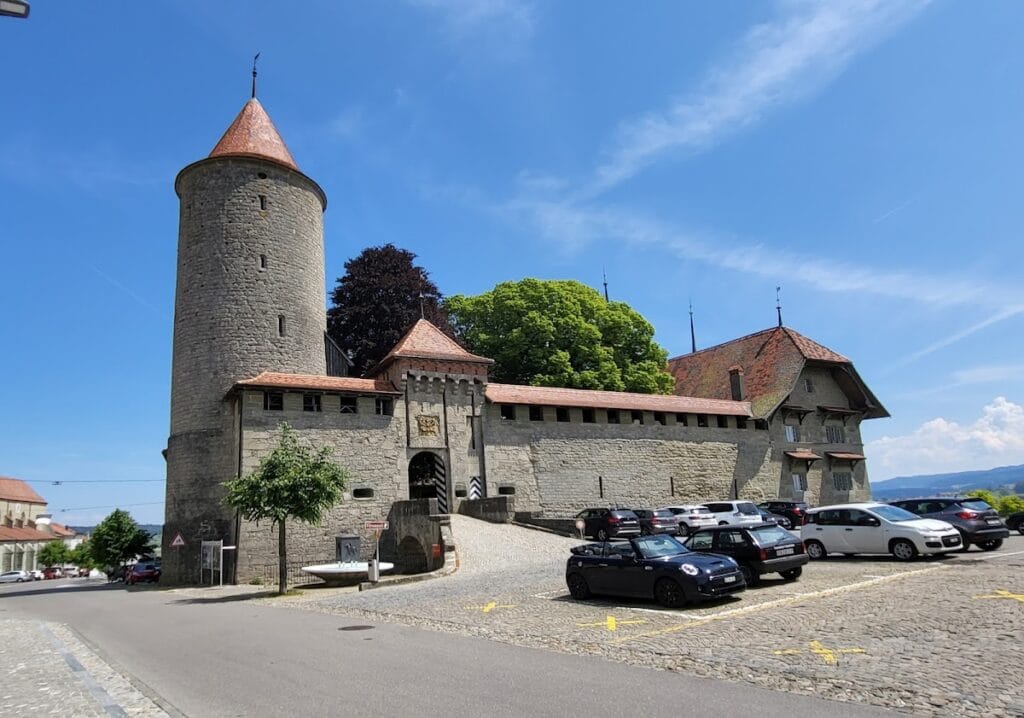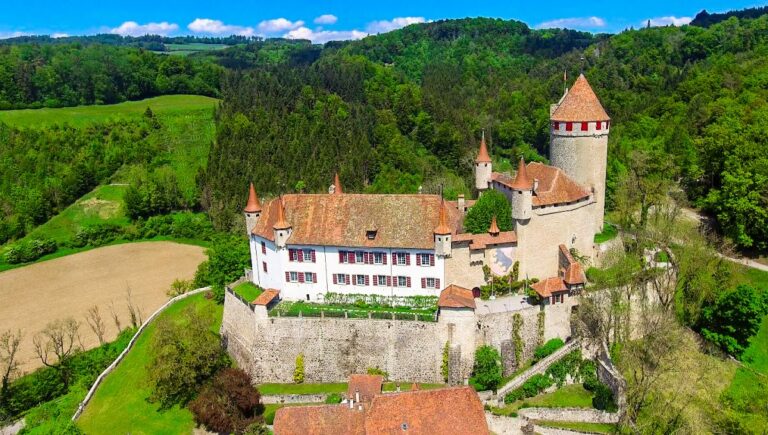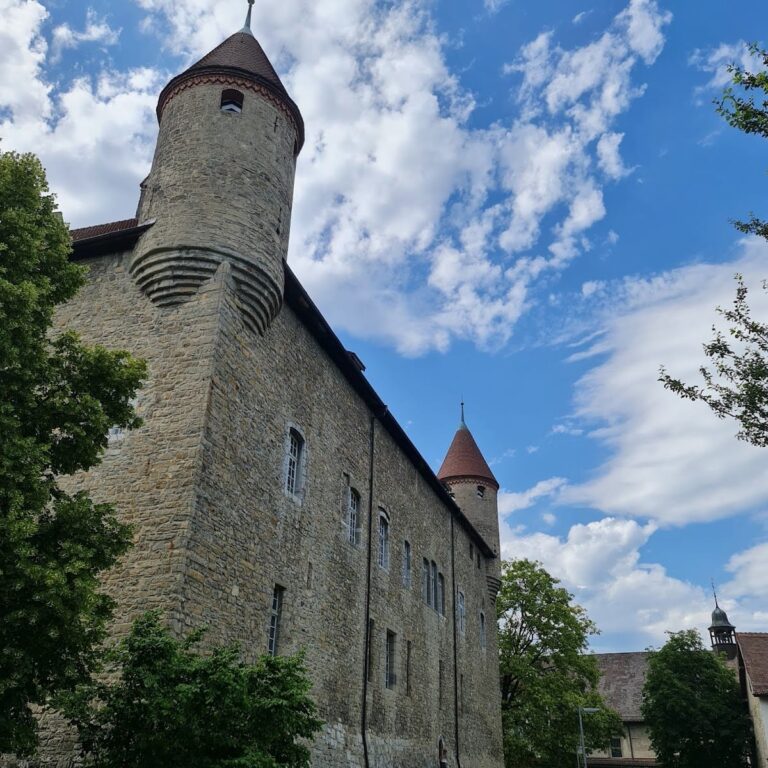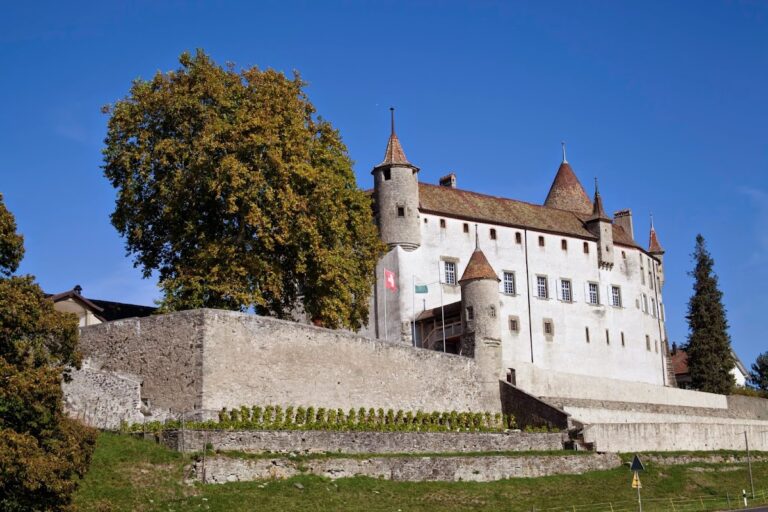Romont Castle: A Historic Savoyard Fortress in Switzerland
Visitor Information
Google Rating: 4.5
Popularity: Low
Google Maps: View on Google Maps
Official Website: fribourg.ch
Country: Switzerland
Civilization: Medieval European
Remains: Military
History
Romont Castle is situated in the municipality of Romont in Switzerland and was established by the House of Savoy. Its origins trace back to 1239, when rights over the Romont hill were transferred from Anselm of Billens to Peter II of Savoy. Peter II had previously served as a canon and administrator for the Diocese of Lausanne but left the clergy in 1234. Soon after acquiring the site, he expanded Savoyard influence in the region amid a contested struggle over the bishopric of Lausanne by constructing the castle and founding the adjoining settlement.
By around 1260, the castle’s main structure was largely finished as a “carré savoyard,” which refers to a square fortress configuration with a key donjon or main tower positioned in the southwest corner. Romont Castle became the administrative center of a Savoyard castellany—an area of lordship—spanning approximately 130 square kilometers. During this time, it played a significant role as a fortress and strategic outpost for the expanding Savoyard territory.
Through the late 13th and early 14th centuries, control of the castle passed to the Savoy-Waadt line from 1285 to 1359, and later to Amadeus VI of Savoy. In 1439, Amadeus VIII elevated the castle and its surrounding lands to a county level and granted it to his half-brother, Humbert. However, during the Burgundian Wars in 1476, Bernese forces captured Romont Castle, only for it to be regained by the House of Savoy two years later. This return provoked disputes among heirs over the castle’s inheritance.
Local governance of the castellany was maintained by a castellan appointed by the Lords of Romont until 1536. That year marked a turning point when Bern conquered the region again, prompting Romont to align with the canton of Fribourg to preserve its Catholic faith. With this shift, the castle became the seat of the Fribourg bailiwick, hosting the residence of local officials and patricians.
After part of the castle collapsed in 1579, reconstruction efforts completed by 1591 included rebuilding significant portions such as the gate tower. Romont Castle continued to serve as the home of 55 successive bailiffs until the French invasion in 1798. Following this upheaval, it was repurposed as a prefecture until 1848. Meanwhile, though the Savoy family surrendered their claim to the county officially in 1578, they continued to hold the noble title up to 1946.
The castle underwent major restorations during the 20th century from 1921 to 1929 and again in 2006. Since 1981, it has housed the Swiss Museum of Stained Glass and Glass Art along with a research center dedicated to stained glass craftsmanship. Recognized for its historical value, Romont Castle is listed as a cultural property of national significance in Switzerland.
Remains
Romont Castle exemplifies the classic Savoyard square fortress design known as the “carré savoyard,” characterized by a regular four-sided plan anchored by a dominant donjon in the southwest corner. This main tower stands approximately 38 to 40 meters tall and is topped with a conical roof, making it a distinct landmark. The oldest surviving structural elements include the Romanesque outer walls and this principal tower, reflecting the castle’s medieval origins.
The fortress likely functioned as a water castle originally, designed to be accessible only by a drawbridge crossing surrounding moats. Within the courtyard lies a deep well roughly 40 meters in depth and 2 meters in diameter, which historically supplied water to the inhabitants. An 18th-century water wheel measuring 4.5 meters across was installed to aid drawing water from the well, demonstrating hydraulic technology use in the castle’s operations.
Along the eastern side of the complex, several square towers are integrated into the overall fortification. This side also features a later two-story building known as the “new castle” or château fribourgeois, which served as the bailiff’s residence during Fribourg governance. Inside, it contains a hall with 16th-century painted decoration and an octagonal stair tower facing the courtyard, indicating Renaissance-era modifications following the castle’s partial collapse.
The gate tower positioned on the southern facade was constructed between 1586 and 1589 as part of the post-collapse rebuilding campaign. Above its entrance is a coat of arms and it is linked with battlemented walls equipped with a defensive wall walk for soldiers. Window openings on this side were altered in a Baroque style, showing changes in architectural taste during later centuries.
The western perimeter consists of high defensive walls with battlements and arrow slits, maintaining military functions. On the north side stands the main residential building, referred to as the “old castle,” which includes two lower wings. Archaeological work has revealed that the portico here represents the third iteration built on the site, revealing layered construction phases over time.
Inside the courtyard, covered galleries extend along the facades of several buildings, providing sheltered walkways. In 2006, a modern glass gallery was added to the north side of the new castle, blending contemporary materials with historic structures. The main entrance gateway features a rounded arch dating from the 16th century, aligning with Renaissance redesign efforts.
Throughout the complex, original medieval masonry is preserved alongside Renaissance and later architectural alterations. Dendrochronological studies—tree-ring dating—have confirmed that some parts of the old residential section date back to 1249. Together, these features portray Romont Castle as a well-preserved example of Savoyard military and administrative architecture that evolved across centuries.










